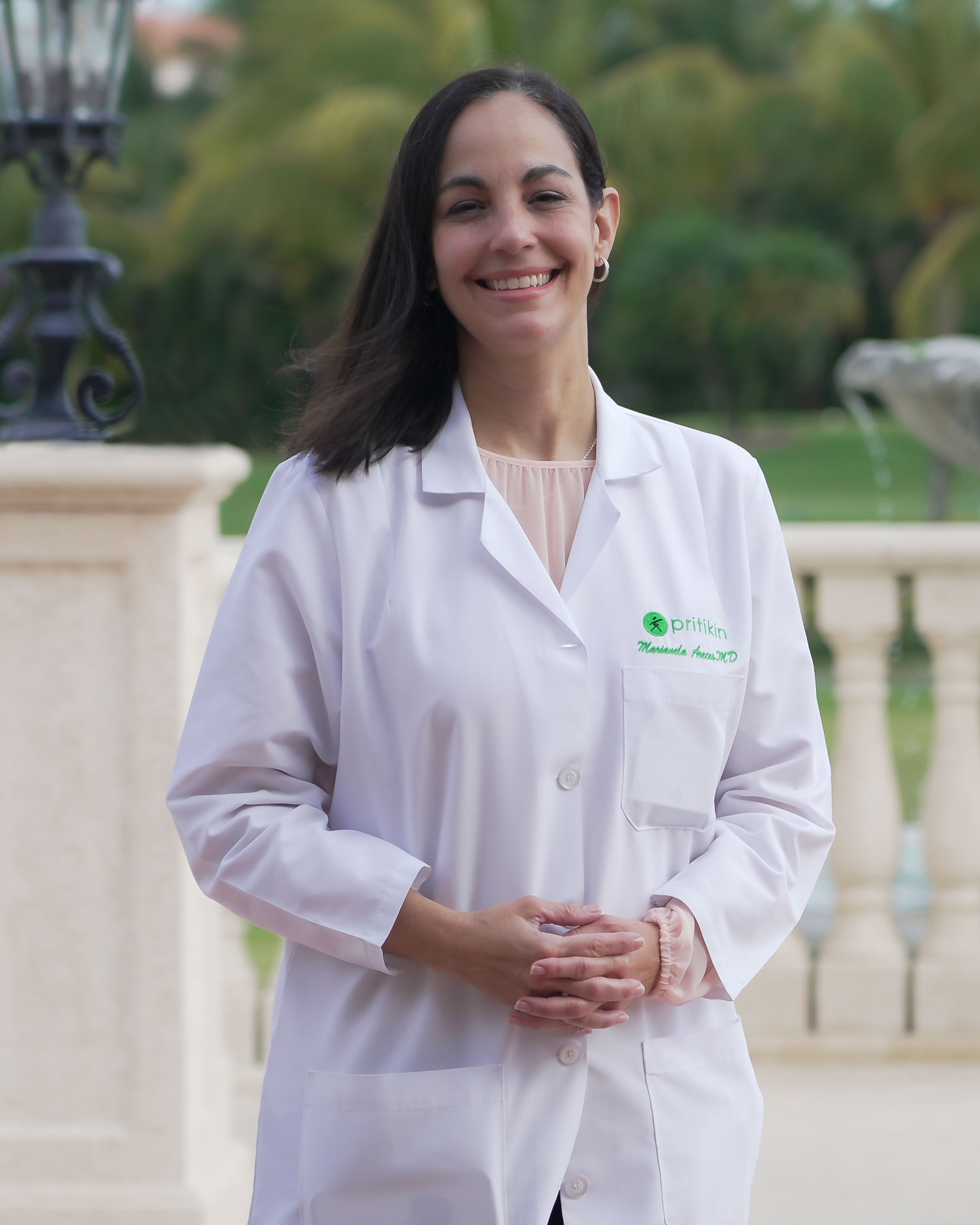
Marianela Areces, MD
Medical Director, Cardiologist & Educator
- Board Certified, American Board of Internal Medicine, Cardiovascular Disease
- Assistant Professor of Medicine, Washington University School of Medicine, Division of Cardiology
- Fellowship in Cardiology, Washington University School of Medicine
- Fellowship in Advanced Echocardiography, Washington University School of Medicine
- Residency in Internal Medicine, University of Miami, Jackson Memorial Hospital
- MD, Honors at Graduation, University of Puerto Rico School of Medicine
- Castle Connolly Top Doctor in Cardiovascular Disease
- Outstanding Leadership Award, University of Puerto Rico School of Medicine
- Research includes: Co-Investigator – “Identification of Biomarkers for Early Diabetic Cardiomyopathy”; Co-Investigator – “Effects of Gastric Bypass-induced Weight Loss on Myocardial Structure, Function and Metabolism.”
I've always found the heart to be the most fascinating piece of machinery ever created. I was astonished to learn how much we can do to prevent - and sometimes even reverse - damage to our hearts.
Dr. Areces cannot remember a time when healthy eating was not a part of her life. “I guess that’s what happens when you have a parent who is a pediatrician,” she smiles.
“As a pediatrician, my father always promoted a healthy lifestyle for his children and their families. He always emphasized exercise and healthy eating. His own children, myself included, fell right in line. We rarely ate out. We rarely ate fast food.
“We followed the traditional Latin way of eating in Puerto Rico – a lot of beautiful, season-fresh whole foods like fruits and vegetables, and beans and whole grains, which, of course, is the Pritikin way of eating, too.”
Cardiovascular Prevention
Marianela carried her innate interest in healthy living to medical school. In her fellowships, she developed a passion for cardiovascular prevention.
“I’ve always found the heart to be the most fascinating piece of machinery ever created. I was astonished to learn how much we can do to prevent – and sometimes even reverse – damage to our hearts. As a cardiologist focused on prevention, I felt that I could make a difference and actually turn people’s lives around.”
But turning lives around, she learned, requires patient education, and education takes time. She found that in her pre-Pritikin career at Cleveland Clinic Florida, time constraints could limit the education given to patients.
“A breath of fresh air”
Coming to Pritikin “has been like a breath of fresh air,” she smiles. “I have adequate time with patients to dedicate to education and cardiovascular prevention. I tell my patients here at Pritikin that the difference between Pritikin and a typical clinical practice – and the reason the Pritikin Program works so well – is the education component.
“People know what they should and shouldn’t eat, but they don’t understand why. I think this disconnect seriously impacts the foods and lifestyles they choose. Here at Pritikin, people learn not only the ‘why’s’ for healthy living but also the ‘how’s.’ Here, healthy living becomes second nature. And here, people discover what a pleasure healthy living can be.”
Upon first coming to work at Pritikin, a very pleasurable experience for Dr. Areces herself was discovering how quickly her patients improved.
“I’m still amazed!”
“I’ve been at Pritikin for many years, and I’m still amazed! Within just one week, for example, many of my patients are off their blood pressure medications. At first, I must say, I was shocked. As a doctor, you’re used to adding medications, not taking them away. It’s an entirely different world here at Pritikin, a much better world!”
New Lecture at Pritikin | “What’s Salt Got To Do With It?”
Like many of her colleagues at Pritikin, Dr. Areces not only meets with patients in one-on-one consults, she also teaches in the classroom setting.
A new lecture she’s leading is on high blood pressure: “What’s Salt Got To Do With It?” Always, she begins with the “why.”
“People really don’t know what 120/80 means.”
“People really don’t know what 120/80 means. So that’s how I start my lecture, with the basics. By the end of the lecture, I see the light in their eyes, the realization of: ‘Oh, now I get it!’ For the first time, they’re understanding their disease, how all that pressure that has been pushing against their arteries, with every single heartbeat, over years and years, can affect their heart, kidneys, and even their brains. For the first time, they’re truly motivated to do something about it.”
Heart-Healthy Living at Home
Heart-healthy living is what Dr. Areces lives and breathes not only as a doctor but as a mother. She and her husband, also a physician, make sure their 12-year-old son and 9-year-old daughter are moving every day. They’re both active in sports. Their daughter also enjoys ballet.
Food at home is like food at Pritikin – lots of fresh, delicious in-season fruits and vegetables, and on most nights, healthy, homemade dinners.
Eating out can be a challenge. Says Marianela: “My husband and I have always said that the kids’ menu, which should be the healthiest food, is usually the worst food – pizza, chicken nuggets, and ice cream.
“We never try to be fanatical in our children’s food choices”
“Of course, our kids have pizza and ice cream every now and then. We never try to be fanatical in their food choices. But we talk a lot about healthy choices, and they get it. It makes sense to them that the fuel you put in your tank matters, and that there’s fuel like whole, fiber-rich foods that can make your body run much better than other fuels.”
Yes, in many ways, Dr. Areces is doing exactly what her father taught her to do. “Good role models are very important,” she agrees.
Her father is no doubt proud of what an extraordinarily good role model she’s become for all of us!